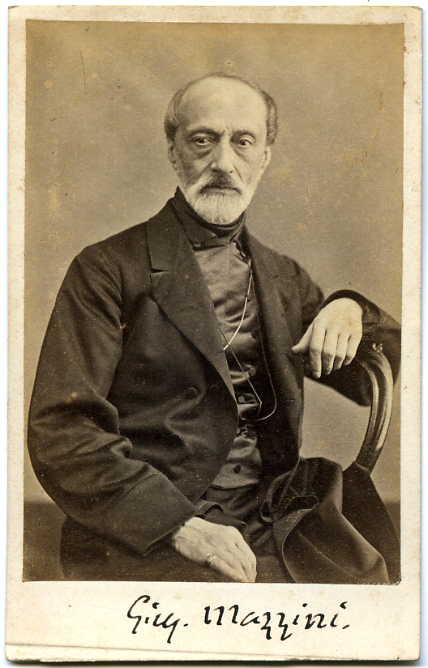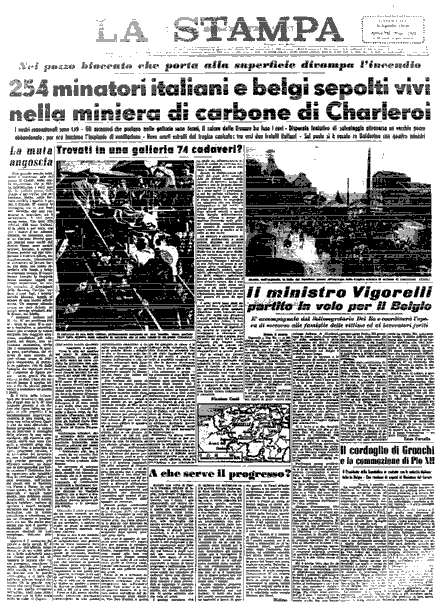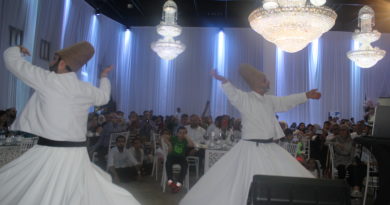Italian migration to Belgium: the role of Brussels
The Italian migration to Belgium was not made only of “cardboard suitcases”, the flimsy suitcases often tied with string that accompanied the migrants who went to work abroad.
Well before the “cardboard suitcases”, Belgium saw the arrival of merchants and bankers from Lombardy, Florence, Genoa… who made business in the Flanders area from the beginning of the 13th century. The memory of their presence is still felt in Belgium, as those who attend the “Holy Blood” procession in Bruges once a year can confirm. There, among the highest authorities of ancient Belgium, one could also spot Italian bankers and merchants, from the Middle Ages and Renaissance, march in their velvet capes and silk clothes, furry hats and collars in good company of the Flemish aristocrats of the time.
Bankers and merchants had well managed their finances, especially the trade of cloth: wool from England, silk and damask from the East. The Italian merchants were active in England, France, Spain and the East while Italian writers of the Renaissance described their life in other countries where they had lived. Ludovico Guicciardini, a contemporary historian of Niccolo’ Machiavelli, had worked in Antwerp which he described as a model for the cities of his time. And Falconplein, an area then at the periphery of Antwerp, had been donated by King Jean III of Brabant to the Italian Falco de Lampage, the head of the “Hotel des Monnaies”, the mint of this era.
The first Italian “association” in Brussels was the “Academie des Confus”, a literary circle created by the Genoans (no connection with the word “confusion” which is often associated to the Italian way of life) which aimed at mixing all the participants, without any distinctions of origin or citizenship.
In the 16th century, writers and painters from what were then Belgium and Italy met regularly and exchanged visits in their countries. The intensification of these visits led to the creation in Rome of a very important art school whose works of art are visible in many museums around the world.
Culture and trade. These were the primary reasons for the Italians to leave their land. Up to the 19th century, especially after the birth of Belgium in 1830, when the exchanges became more “political”.
 Belgium became a welcoming land for those who did not want to accept the authoritarian regimes which led Italy and were forced to leave. Many of them created “literary salons” for Belgians, Italians and all foreigners. The ideas of some of the Italian “patriots” were absorbed by the Belgian “patriots” when they claimed the creation of their country. Giuseppe Mazzini was often in Brussels to spread the message of independence.
Belgium became a welcoming land for those who did not want to accept the authoritarian regimes which led Italy and were forced to leave. Many of them created “literary salons” for Belgians, Italians and all foreigners. The ideas of some of the Italian “patriots” were absorbed by the Belgian “patriots” when they claimed the creation of their country. Giuseppe Mazzini was often in Brussels to spread the message of independence.
But already by the end of the 19th century there were some workers who migrated from Italy to Brussels and Liege. For Italy it was the beginning of the “big emigration” of workers. Also the literary migration of intellectuals continued: at this time the “literary salon” of Isabella Errera was opened for intellectuals of Italy and Belgium and commercial links were created. It was in 1899 that the Italian Chamber of Commerce in Belgium was established and the presence of workers in this country led to the creation of “mutuelles” to support the migrants with difficulties and their families, especially travelling musicians.
It was in 1888 that one of the first Italian miners arrived in Belgium. Leonard Louis Bertollin was an 18 years old chimney-sweep who came from the Aosta Valley. Winter had arrived early that year and the young man was still in Belgium, which he had reached on foot at the beginning of the summer like in previous years. He was welcomed in the mine of Bois du Luc near la Louviere. He remained there until his death.
 In Liege and Charleroi, the rise of the steel industry in the second half of the 19th century created a flow of migrants, especially skilled workers from Italy. But the arrival of political refugees continued, especially towards the end of the century, after the cruel repressions of General Bava Beccaris in Italy which “killed” the revolutionary movement of “Fasci Siciliani” in 1898.
In Liege and Charleroi, the rise of the steel industry in the second half of the 19th century created a flow of migrants, especially skilled workers from Italy. But the arrival of political refugees continued, especially towards the end of the century, after the cruel repressions of General Bava Beccaris in Italy which “killed” the revolutionary movement of “Fasci Siciliani” in 1898.
The arrival of the migrants implied also the arrival of religious orders and the creation of cultural institutions to make the Italian language and culture known in the country.
In 1905 the “Società Dante Alighieri” for the teaching of the Italian language was created in Liege. It was very useful for those Belgian engineers who were going to work in Italy. This led to things like the tramway network in Naples, which was built by a Belgian company in 1875.
Another important literary club in Brussels at the beginning of the 20th century is the one created by Francesco Luigi Ferrari, a supporter of the “Popular Party” (Partito Popolare) created by Don Luigi Sturzo in Italy, the founder of the party: Christian Democracy, which had existed in Italy for over several decades. Ferrari himself and his house became the contact point of the Italian elite that the fascist regime had forced to leave the country. From Belgium they tried to warn their compatriots against the dangers of Fascism.
In 1944 the “Committee of National Liberation” was created. It had a very important role in assisting the Italians. It was thanks to its action that contacts were created that led to the signing on June 23rd 1946 of the Migration Protocol between Belgium and Italy for the arrival of miners to Belgian coal mines. Belgium needed workers to win its “battle of coal”, Italy needed both the migrants’ salaries to face up to the post-war crisis and the coal to relaunch its industries.
After the catastrophe of Bois du Cazier in Marcinelle on August 8th 1956 with the death of 262 miners, of which 136 were Italians, the official migration agreement was interrupted. But migrants continued to arrive because it was difficult to find a stable job in Italy. Belgium then started importing workers from other countries; Greece, Spain, Portugal, Turkey and even Northern Africa.

The conditions of work were improved by the creation of the European Coal and Steel Community (ECSC) the first step towards the creation of the Common Market and then the European Union. Many miners received their pensions thanks to the ECSC but the exploitation of mines in Belgium became too expensive after the launch of the Marshall Plan which implied the European import of American coal at a reduced price. The last mine in the Wallonian region closed in 1982, the very last mine in the Flanders area (Limbourg) closed in 1993. For Belgium it was the end of an era. For many miners it will be a life of hardship and illnesses, as many of them had been affected by “silicosis”, which affected their lungs, caused by the dust in the mines. The Belgian government recognised silicosis as a professional illness only in 1963. The number victims of this illness counts in the thousands.
In spite of the closure of mines, migration to Belgium continued from Italy, other European countries and from Africa. The Italians are the most numerous European group of migrants in Belgium at 360.000 people, without counting those who have chosen to become Belgian citizens.
Only for the last 3-4 years, Italians in Belgium have been allowed dual nationality, adding Belgian to their Italian without losing either of the two as was the case before. Italy has recognised this right of dual nationality to its nationals with a delay compared to other countries and Belgium itself.
Many of the old miners and their families did not return to Italy after the closure of the mines. They remained in Belgium and many of them went on to live in Brussels especially in Molenbeek and Anderlecht where a good industrial area was being established and jobs were being created. The relationship between Italians and the newer immigrants from Morocco and Northern Africa in these areas, especially Molenbeek, has been a good example of “good understanding”. The current Italian “echevine” for environnment of the Molenbeek municipality, Annalisa Gadaleta, is a good example of this understanding. And in Anderlecht the “CASI-UO” the “peoples’ university” and cultural centre keeps the Italian and Belgian communities together with an intensive cultural and historic programme of activities.
The latest wave of Italians coming to work in Brussels is made of young people – we call them the Erasmus migrants- many trying to find a job in the European institutions and in the microcosm of associations, NGOs and companies that accompany the work of the EU in Brussels. Many of them are officially registered, many come to try out the market to see if there are possibilities of work even if their suitcase was not made of cardboard. They are the “computer migrants”, those who arrive with their modern skills to see if they can be applied in Brussels. For some, it can mean success, for others it can be a good experience to treasure in future endeavours.
The way ahead in Brussels should be forged along these lines.



